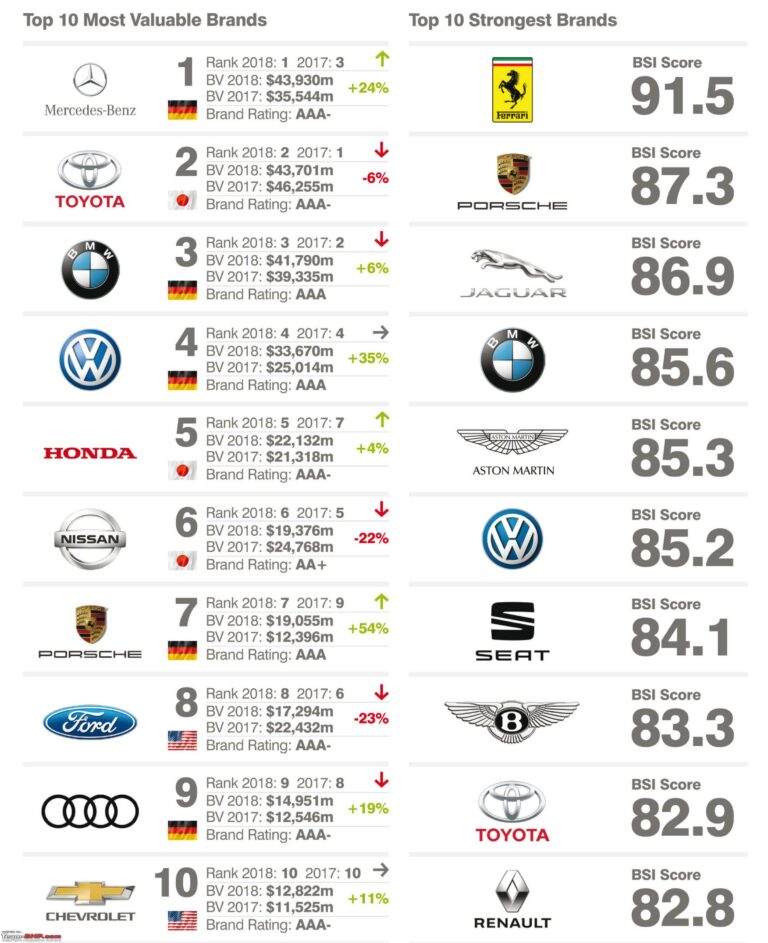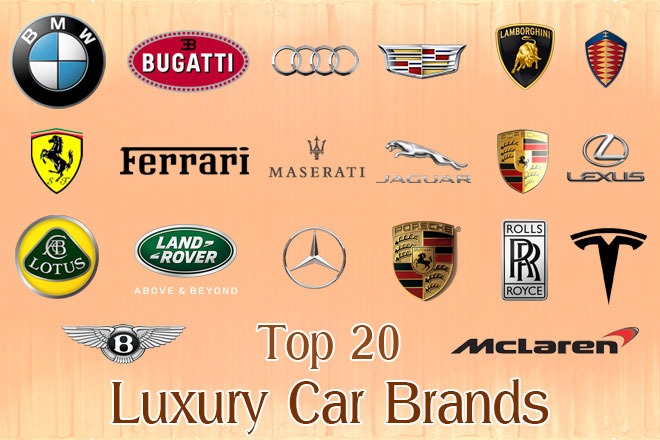Consumer Reports Top Car Brands: A Comprehensive Guide to Informed Car Buying
Consumer Reports Top Car Brands: A Comprehensive Guide to Informed Car Buying cars.truckstrend.com
In the vast and often bewildering landscape of automobile choices, prospective car buyers often seek a beacon of unbiased truth. For decades, that beacon has been Consumer Reports (CR). An independent, non-profit organization dedicated to consumer advocacy, Consumer Reports is renowned for its rigorous testing and data-driven analysis. When CR releases its "Top Car Brands" rankings, it’s more than just a list; it’s a culmination of extensive research, real-world owner feedback, and expert evaluations, designed to empower consumers to make the smartest purchasing decisions.
Understanding Consumer Reports’ Top Car Brands is crucial because it cuts through the marketing hype and focuses on what truly matters: reliability, safety, performance, and owner satisfaction. Unlike many automotive reviews that might be influenced by advertising or brand partnerships, CR’s assessments are funded solely by its subscribers, ensuring an impartial perspective. This guide will delve into the methodology behind these coveted rankings, explore the characteristics of top-performing brands, and provide actionable advice on how to leverage this invaluable resource in your car buying journey.
Consumer Reports Top Car Brands: A Comprehensive Guide to Informed Car Buying
The Meticulous Methodology Behind the Rankings
Consumer Reports doesn’t just pick names out of a hat. Their "Top Car Brands" ranking is the result of a sophisticated, multi-faceted evaluation process that aggregates data from various crucial aspects of vehicle ownership and performance. This holistic approach ensures that a brand’s overall score reflects its consistent quality across its model lineup, rather than just the success of a few standout vehicles.
The primary pillars of CR’s brand-level evaluation include:
-
Predicted Reliability: This is arguably the most significant factor. CR gathers data from its annual Auto Reliability Survey, which collects information from hundreds of thousands of CR members about their experiences with their vehicles over the past 12 months. This vast dataset covers 17 potential trouble spots, from major engine and transmission issues to minor squeaks and rattles. Brands with a consistent history of fewer reported problems across their models score higher. For new or redesigned models, CR leverages historical data from the brand and similar platforms to predict reliability.

Owner Satisfaction: While reliability measures how often things go wrong, owner satisfaction gauges how much owners love their cars. CR asks owners a critical question: "Would you buy this car again if you had to do it all over?" A high "yes" rate indicates that the brand is delivering on its promises and meeting or exceeding owner expectations in terms of comfort, performance, features, and overall ownership experience.
-
Road Test Score: CR maintains a sprawling 327-acre Auto Test Center in Connecticut, where its team of automotive engineers and technicians rigorously tests hundreds of vehicles each year. Each vehicle undergoes more than 50 objective tests and evaluations, covering performance aspects like acceleration, braking, handling, fuel economy, comfort, quietness, and ease of use of controls. The average road test score of a brand’s tested models contributes significantly to its overall brand ranking.
-
Safety Performance: Safety is paramount. CR incorporates data from crash tests conducted by the National Highway Traffic Safety Administration (NHTSA) and the Insurance Institute for Highway Safety (IIHS). Furthermore, CR assesses the availability and effectiveness of advanced driver-assistance systems (ADAS) like forward collision warning, automatic emergency braking, and blind-spot warning as standard or optional features across a brand’s lineup.
-
Green Choice/Environmental Impact: While not a direct component of the brand score itself, CR also highlights "Green Choice" vehicles based on their combined emissions and fuel economy. Brands that offer a higher proportion of environmentally friendly vehicles may indirectly benefit from this positive association in the eyes of consumers.


By combining these diverse data points, Consumer Reports constructs a powerful, data-driven assessment of car brands, providing a comprehensive picture of what consumers can expect from a brand’s vehicles over time.
Decoding the Top Performers: What Makes Them Stand Out?
While the specific order of Consumer Reports’ Top Car Brands can shift year to year, certain patterns and characteristics consistently emerge among the highest-ranked marques. These brands typically exhibit:
- Unwavering Consistency in Reliability: This is the hallmark of top-tier brands. They don’t just produce one or two reliable models; their entire lineup tends to demonstrate robust engineering and meticulous quality control, leading to fewer reported problems by owners.
- Strong Owner Loyalty: Brands like Subaru, Mazda, and Toyota frequently score high in owner satisfaction, indicating that their vehicles not only perform well but also create a positive emotional connection with their owners, who are likely to return for future purchases.
- Balanced Performance: Top brands often strike an excellent balance between comfort, performance, and efficiency in their road tests. They might not always be the sportiest or most luxurious, but they excel in delivering a well-rounded driving experience that appeals to a broad spectrum of drivers.
- Commitment to Safety: Leading brands prioritize safety, often making advanced safety features standard across more of their models and consistently earning top marks in crash tests.
- Thoughtful Design and Ergonomics: User-friendly infotainment systems, comfortable seating, intuitive controls, and practical interior layouts contribute significantly to owner satisfaction and are often features of highly-rated brands.
- Effective Quality Control: It’s not just about design, but also execution. Top brands have robust manufacturing processes that minimize defects and ensure consistent quality across their production lines.
Historically, Japanese brands like Mazda, Subaru, Toyota, and Honda, along with their luxury counterparts Lexus and Acura, have frequently dominated the top spots due to their exceptional reliability and owner satisfaction. European brands like BMW and Porsche have also consistently performed well, particularly in road test scores and owner satisfaction, though their reliability can sometimes be more varied.
How to Use Consumer Reports’ Rankings for Your Car Purchase
The "Top Car Brands" list is an excellent starting point, but it’s just that – a starting point. To truly leverage this information for your next car purchase, follow these actionable steps:
-
Begin with the Brand Rankings, but Don’t Stop There: If a brand consistently ranks high, it’s a good indicator of overall quality and reliability. This narrows down your initial search significantly. However, even a top-ranked brand might have a specific model that doesn’t fit your needs, or a lower-ranked brand might offer a particular model that excels in certain areas.
-
Drill Down to Model-Specific Reviews: Once you have a few promising brands, delve into CR’s detailed reviews for the specific models you’re considering. Look at their individual predicted reliability scores, owner satisfaction data, road test results, and safety ratings. A brand’s overall score is an average; individual models can vary.
-
Consider Your Personal Priorities: Are you a commuter who values fuel economy and reliability above all else? A family needing space, safety, and a comfortable ride? A driving enthusiast prioritizing performance? Use CR’s data to find models that align with your specific needs and preferences. A top-rated brand might not be the best for you if its models don’t match your lifestyle.
-
Cross-Reference and Compare: While CR is highly respected, it’s wise to cross-reference information with other reputable sources like the IIHS and NHTSA for detailed crash test results, and independent automotive journalism for diverse perspectives.
-
Factor in Long-Term Ownership Costs: Beyond the purchase price, consider depreciation, insurance costs, and expected maintenance. Reliable brands often have lower long-term costs. CR’s data can indirectly inform these aspects.
-
The Indispensable Test Drive: No amount of data can replace the experience of driving the car yourself. Pay attention to comfort, visibility, ease of controls, infotainment system usability, and how the car feels on the road. Take it on routes similar to your daily commute.
-
Check for Recalls and Service Bulletins: Before finalizing a purchase, especially for used cars, check NHTSA’s website for any open recalls on the specific model and year.
Beyond the Rankings: Important Considerations and Potential Challenges
While Consumer Reports provides an invaluable service, there are nuances and challenges to keep in mind:
- New Models and Redesigns: When a brand introduces an entirely new model or a significant redesign, initial reliability data from owners might be limited. CR will provide predicted reliability based on the brand’s history and similar components, but it takes time for real-world data to accumulate. If you’re an early adopter, you’re taking a calculated risk.
- Personal Preference vs. Objective Data: A car might rank highly in CR’s tests but simply not resonate with your personal aesthetic or driving style. Conversely, a lower-ranked brand might offer a model that perfectly suits your niche needs. The rankings are a guide, not a rigid commandment.
- Market Availability and Pricing: CR’s ratings don’t account for current market conditions, dealer markups, or regional availability. A highly-rated car might be difficult to find or carry a premium price tag.
- Luxury vs. Mainstream Expectations: A luxury brand might have different reliability expectations than a mainstream brand, even if both score similarly. Consumers often tolerate minor issues in a luxury vehicle if the overall experience is exceptional, while expecting flawless operation from a more utilitarian vehicle.
- Electric Vehicle (EV) Evolution: As the automotive landscape shifts towards EVs, reliability data for new electric platforms is still maturing. CR is adapting its methodology to account for EV-specific components like battery health and charging systems.
Solutions and Strategies:
- Patience for New Models: If you’re eyeing a brand-new or redesigned model, consider waiting 6-12 months after its release for more real-world reliability data to emerge.
- Prioritize Your "Must-Haves": Make a list of your absolute non-negotiables (e.g., specific safety features, cargo space, AWD) and filter models based on these first, then apply CR’s rankings.
- Be Flexible: If your top choice is unavailable or too expensive, use CR’s data to find highly-rated alternatives within your budget.
- Read the Nuances: CR’s detailed reviews often highlight specific pros and cons that might sway your decision even if the overall brand score is high.
Key Evaluation Criteria and Characteristics of Top-Ranked Brands
To summarize how Consumer Reports evaluates and how brands excel:
| Evaluation Criterion | Description | Why it Matters for Top Brands |
|---|---|---|
| Predicted Reliability | Based on owner surveys reporting issues across 17 problem areas for hundreds of thousands of vehicles. | Consistent Quality: Top brands show fewer problems across their entire lineup, indicating robust engineering, thorough testing, and excellent manufacturing processes. Low repair costs and fewer headaches for owners. |
| Owner Satisfaction | Percentage of owners who would buy the same car again, reflecting overall happiness with the vehicle. | Exceeding Expectations: High satisfaction means owners find the vehicle comfortable, performs well, is enjoyable to own, and offers good value, leading to strong brand loyalty and positive word-of-mouth. |
| Road Test Score | Average score from CR’s 50+ objective tests (acceleration, braking, handling, comfort, fuel economy). | Balanced Performance: Top brands excel in delivering a well-rounded driving experience, blending comfort, responsiveness, and efficiency without major compromises. |
| Safety Performance | Derived from crash test results (NHTSA, IIHS) and availability/effectiveness of ADAS features. | Prioritizing Protection: Leading brands often make advanced safety features standard and consistently earn top safety ratings, demonstrating a commitment to passenger protection. |
| Common Traits of Top Brands | Characteristics frequently observed among highly-rated brands. | Holistic Excellence: These brands combine thoughtful design, intuitive technology, effective quality control, and a strong after-sales reputation, building trust and confidence with consumers. |
Frequently Asked Questions (FAQ)
Q1: Do Consumer Reports’ car brand rankings change every year?
A1: Yes, the rankings can and often do change year to year. This is because CR continually updates its data with new owner survey responses, fresh road test results for new models, and evolving safety information. A brand’s position can shift based on the reliability of its latest models, changes in owner satisfaction, or even the introduction of new safety features.
Q2: Does Consumer Reports test every single car model on the market?
A2: While CR tests a vast number of vehicles (typically 50-70 new models annually), they don’t test every single model. However, their reliability predictions and brand scores are based on extensive data from hundreds of thousands of member surveys covering nearly all popular models, combined with their hands-on road testing of key vehicles.
Q3: If a brand is ranked lower, does that mean all its cars are bad?
A3: Not necessarily. The brand ranking is an average across the entire lineup. A lower-ranked brand might still have one or two specific models that perform exceptionally well in terms of reliability, safety, or owner satisfaction. Always check the model-specific ratings in addition to the overall brand score.
Q4: How important is owner satisfaction in the overall ranking?
A4: Owner satisfaction is very important. While reliability tells you if things break, owner satisfaction tells you if people actually enjoy owning the car and would recommend it. It’s a crucial indicator of the overall ownership experience, covering aspects like comfort, features, and driving dynamics that might not be captured by reliability data alone.
Q5: Does Consumer Reports accept advertising from car companies or rely on manufacturer samples?
A5: Absolutely not. This is a cornerstone of CR’s independence. They purchase all the vehicles they test anonymously from dealerships, just like a regular consumer. Their funding comes solely from subscriptions and donations, ensuring their evaluations remain unbiased and free from commercial influence.
Conclusion
Consumer Reports’ Top Car Brands list is an indispensable tool for anyone navigating the complex world of car purchases. By understanding the rigorous methodology behind these rankings, the characteristics that define top performers, and how to apply this knowledge effectively, you empower yourself to make a truly informed decision.
While the rankings provide a powerful starting point, remember that the "best" car is ultimately the one that best suits your individual needs, preferences, and budget. Use CR’s comprehensive data as your trusted guide, combine it with your own research and test drives, and drive away with confidence, knowing you’ve made a choice rooted in reliability, safety, and satisfaction.






